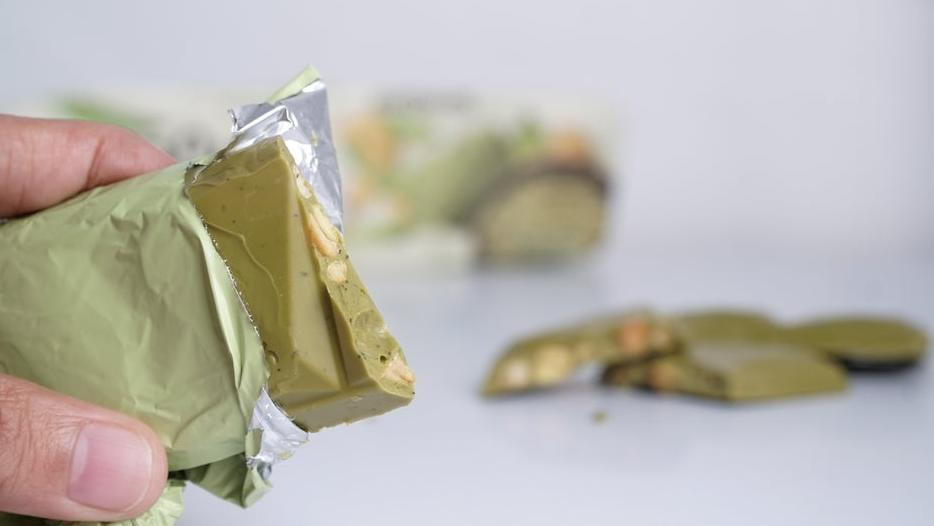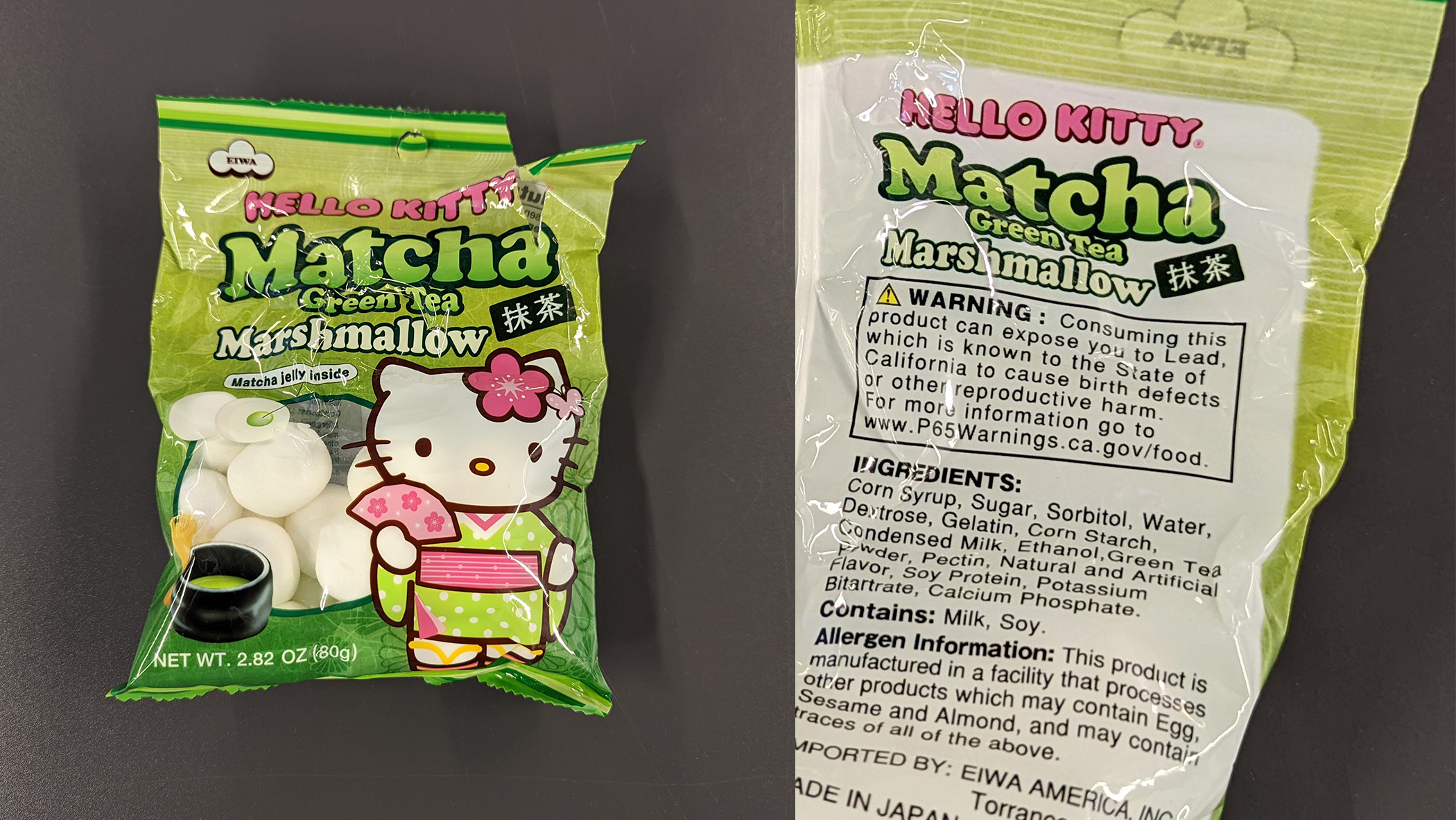What The Lead Warning On Your Candy Actually Means
Are you ingesting some poison along with your afternoon snack?
We may receive a commission on purchases made from links.
Not all grocery store candy aisles are created equal, so when I'm shopping at an unfamiliar supermarket, I always make a beeline for the sweets and snacks to see what they're working with. On a recent trip to western Illinois, I scored big at the Hy-Vee, which had adorable bags of Hello Kitty–branded Green Tea Marshmallows with matcha jelly inside. Little did I know this would turn out to be a waste of $4.50, because after eating a few marshmallows, I encountered an unappetizing lead warning on the back of the bag.
It reads:
WARNING: Consuming this product can expose you to Lead, which is known to the State of California to cause birth defects or other reproductive harm. For more information go to www.P65Warnings.ca.gov/food.
How could Hello Kitty do us so wrong?
Does candy have lead in it?
Proposition 65, passed in California in 1986, is a law intended to empower the public with information about which consumer products (edible or otherwise), or environments such as workplaces, might expose them to harmful chemicals such as lead, mercury, arsenic, cadmium—specifically, through labels that warn Californians about "significant exposures to chemicals that cause cancer, birth defects or other reproductive harm." Lead exposure can negatively impact brain development in children.
As California's Prop 65 Warnings portal explains, "Lead is a metal found in some dietary supplements, certain balsamic vinegars, some imported spices such as turmeric. In the past, some imported candies such as some products containing chili and tamarind, have had significant amounts of lead."
Candy products containing chili and tamarind are actually referred to by the FDA as "Mexican-style candy," since those flavorings aren't typical of candy produced and consumed in the United States. Delicious though such candy flavors may be, my matcha jelly marshmallows don't contain any chili or tamarind.
However, I saw "green tea powder," another term for matcha, on the ingredient label. I was admittedly surprised that this Eiwa brand product used the real stuff instead of artificial green tea flavor, but it turns out the authenticity of the powder is what requires the lead warning.
Green tea, just like chili and tamarind, is known to contain some amount of lead because of the lead present in the atmosphere and/or soil in which it is grown. (Lead, a toxic metal, doesn't break down in the environment or in our bodies.) So, while green tea powder is technically exposing our bodies to lead, the question is whether this candy has the potential to expose us to an amount of lead that might harm us.
Can lead in candy hurt you?
To find out, I reached out to California's Office of Environmental Health Hazard Assessment. I wanted to know if the Prop 65 warning on my Hello Kitty marshmallows was something to be concerned about.
"Under Proposition 65, a business makes its own decision as to whether it needs to provide a warning, and does not inform [the OEHHA] of their decision or provide us data on their products," said Amy Gilson, Ph.D., Deputy Director of External and Legislative Affairs for the OEHHA, via email. "Therefore, we do not know specifically the amount of lead in this product or the extent to which the product poses a hazard."
The warning label isn't there to provide exact stats on exposure. Instead, it can be thought of more as corporate transparency and perhaps even corporate ass-covering: Now you can't say we tried to pull a fast one on you! As for what level of lead is outright illegal, here's what the attorney general's office says: "California law prohibits the sale of candies containing chili that have a lead level in excess of 100 parts per billion (ppb), or 0.1 micrograms per gram. A separate provision of California law prohibits the sale of products marketed to children that contain high levels of lead."
"Consumers wishing to minimize their overall exposure to lead can avoid products warning for lead," Gilson explains. And since less lead exposure is always better than more, a consumer can ask themselves: even though they're perfectly legal and meet federal standards of food safety, are Hello Kitty Green Tea Marshmallows with Matcha Jelly the micro-risk I want to take? For me, that answer was a resounding "no." Whether the amount of lead present in the candy is significant or not, it's easy enough for me to just opt for a different product. They weren't that good, anyway.
How Prop 65 warnings affect candy
In case it's not already abundantly clear, many food items, such as my Hello Kitty Marshmallows, can meet the federal and state requirements for food safety, yet still require a lead warning. Prop 65 labeling can have effects beyond just informing consumers; best case scenario, those labels lead to changes in manufacturing.
"Proposition 65 has been instrumental in reducing the presence of lead and other chemicals in food that can be hazardous," said Gilson. "It is common for manufacturers of food and other products to take steps to reduce the levels of lead and other listed chemicals in their products to avoid having to give warnings." No one wants the big scary Prop 65 label on their product if they can avoid it.
Even when those companies choose not to reduce lead levels in their products, Prop 65 can ensure that at the very least, consumers are staying informed about it. Gilson pointed me toward a February 2022 press release stating that the attorney general of California, Rob Bonta, alerted retailers that certain varieties of plum candy being sold across the state had not only tested positive for dangerous levels of lead, but also failed to disclose that fact with a Prop 65 warning on the label.
While some critics say that having the warning present on too many packages—a phenomenon known as "over-warning"—can dilute the impact of the label, consumer education is always a good way to counteract that concern. We all know, for example, the risks of smoking, even if the surgeon general's warning on each pack of cigarettes has faded into the background with time. Just like the Nutrition Facts label, the Prop 65 warning is something consumers have at their disposal but are free to ignore if they choose. I might just scan the package for that warning the next time I consider dropping $4.50 on a bag of candy just because it's cute.

